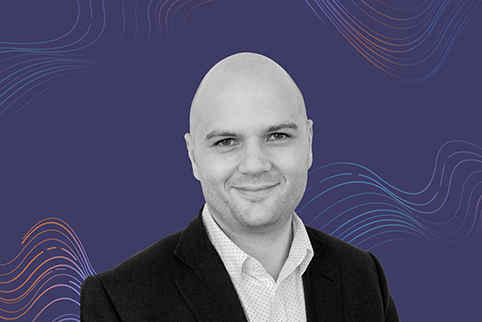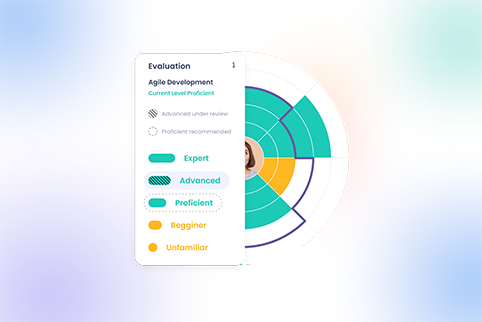Strategic Workforce Planning: A Roadmap for Sustainable Success
8 min read

In the fast-paced and rapidly evolving world of business, having the right talent in the right place at the right time is one of the most significant competitive advantages. And strategic workforce planning is the key to unlocking it.
Unlike other traditional HR practices, strategic workforce planning is a forward-thinking approach that acts as a roadmap to ensure your employees not only meet current needs but also propel your organization toward a thriving future.
Ready to learn more about it? Then, let’s dive right in and explore the importance, benefits, and critical components or steps of a successful workforce planning strategy.
What is workforce planning?
Strategic workforce planning, sometimes abbreviated as SWP or referred to as simply workforce planning, is an ongoing process that ensures that the number (quantity) and expertise (quality) of employees within a company are aligned with the overall business needs and goals.
One of the most important aspects of this process is balancing workforce supply and demand, or, in other words, ensuring that your organization doesn’t end up in an either overstaffing or understaffing situation.
By its nature, strategic workforce planning is more future-oriented, focusing on identifying the key skills that a business will need and defining the strategies to acquire or develop them within the organization.
It’s also worth mentioning, especially in today’s increasingly digitalized and automatized world, that workforce planning is no longer only about determining human capital needs, but also about looking at technological solutions that can replace simpler tasks or help your employees become more efficient and keep providing value.
Why is workforce planning important?
The importance of strategic workforce planning stems from its ability to bring together or impact various aspects of talent management and align them with the overall business strategy.
For example, identifying skill gaps is critical in ensuring the organization can achieve its strategic goals. It enables decision-makers to act early on and address these gaps effectively before they have a more significant impact on performance. Without knowing what the skill gaps are, the workforce will continue to lack critical skills and capabilities to execute the business strategy.
Through regular skill gap analyses, HR can also identify future development needs and adapt their learning and development strategies accordingly — an essential step in future-proofing the workforce and mitigating risks associated with talent shortages or succession planning.
Thus, you can ensure that important resources (both human and financial) are directed toward the right upskilling and reskilling programs, or in some cases, redeployment if needed. By better allocating these resources and implementing more targeted training, your organization will end up developing employees who fully explore and use their skill sets in roles that align their aspirations with organizational needs.
What are the benefits of strategic workforce planning?
When done well, workforce planning brings many advantages to any organization. Let’s look at some of the most important ones:
- Business and performance continuity: By actively addressing and mitigating skill and knowledge gaps, workforce planning has a direct impact on maintaining high and continuous levels of performance, helping your company progress toward its vision.
- Cost and talent optimization: Thanks to strategic workforce planning, you can reduce costs in several ways. For example, by identifying future skills requirements, HR will improve the quality of hires and reduce the risk of turnover. You will also avoid the expenses associated with overstaffing, which occurs when talent strategies aren’t properly aligned with business goals.
- Improved succession planning: By predicting future needs and analyzing the current potential of employees, workforce planning initiatives can help you identify potential future leaders and start preparing them for critical roles, minimizing or even fully preventing the disruptions caused by departures or retirements.
Creating a workforce planning strategy
Let’s take a closer look at the components of strategic workforce planning, which also represent the steps needed to create an effective strategy in that direction:
Understand short- and long-term business objectives
To have the desired positive impact, workforce planning needs to be based on a deep understanding of the organization’s long-term goals and intentions. HR experts should collaborate with C-level executives and other stakeholders to better understand where the company is going.
After these discussions, you can develop a talent strategy that meets business expectations and accounts for various developments, such as:
- business expansion or restructuring
- entering new markets or exiting existing ones (e.g., LG leaving the smartphone market)
- introducing new products or services
Analyze the current workforce
The next step is all about discovering the full potential of employees on the current payroll. During this assessment stage, HR and team leaders need to understand the key skills, traits, and performance levels of their people.
This isn’t only about identifying gaps or areas for improvement, but also about finding hidden strengths and establishing how well each employee or team is aligned with the future needs of the organization.
Forecast future workforce needs
By combining insights from the first step with talent and skill data from the second, HR can then infer or anticipate the abilities and type of talent that will be required in the future. Many factors may play a role here, from business growth and innovations to mass retirement. These can also vary significantly from one business or industry to another.
For instance, Amazon has recently announced trials aiming to use humanoid robots to help staff in warehouses. Their HR department will not only have been made aware of this move but are probably already considering the type of training and future changes required (like possible redeployments) if the trial is successful and will be expanded across other departments or warehouses.
Determine skill and talent gaps and define strategies for recruitment and employee development
Once future workforce needs are identified, the next step of strategic workforce planning is to compare these needs with the current skill set of your employees.
This will be the basis for establishing upskilling and reskilling programs, deciding what would be the best development path for each employee, and, in some cases, looking at external hiring for shortages that cannot be solved internally.
Scenario planning
Since predicting future workforce needs isn’t always a straightforward process, organizations and HR departments need to get creative. What does this mean?
It can take many forms, but usually, it’s about experimenting with simulations or different scenarios that could impact your business and workforce. Think about technological disruptions, economic downturns, and so on.
For each scenario that’s played out, decision-makers need to identify the best response (or a list of potential responses) that can act as a backup plan. This way, even when things go south, companies will be in a good position to respond well.
Developing an agile workforce can be one of the best moves in that direction, since it is defined by highly desirable future traits, such as:
- the ability to move between tasks and projects easily
- transferable skills and knowledge
- positive and can-do attitudes toward new challenges
Learn more about the skills and pillars of an agile workforce.
Implement and monitor the impact of your workforce plan
Finally, the last step is continuous monitoring. This comes with an understanding that strategic workforce planning is an ongoing process, one that needs to evolve and adapt as business goals or market dynamics change.
Here are some ways to further improve the success and impact of your workforce plan:
- Increase your collaboration with top leadership and deepen your understanding of the changing nature of business needs and plans.
- Improve your ability to forecast future workforce needs by looking at competitors and external labor information, like the evolution of key roles, the availability of in-demand talent, critical factors in the attraction and retention of highly desirable talent, etc.
- Embrace data literacy and develop your team’s ability to leverage HR analytics and other tools, such as skills matrices or skills management software, to make better talent decisions based on real-time data insights.
Tips, tricks, and best practices for workforce planning
To take your strategic workforce planning game to the next level, consider some of these practices:
- Embrace flexibility: When looking at workforce planning, it’s almost impossible to exclude flexibility. The process itself relies on factors that aren’t stable or fixed, like unpredictable business needs, market fluctuations, or economic developments. It is therefore a good practice to leave room for changes in any workforce plan and be ready to quickly shift to a different approach when the situation requires.
- Try skills-based approaches: The current workplace landscape has already determined organizations to look at skills-based approaches and evaluate their advantages. And both workforce planning and talent management can benefit. Not only will this improve hiring and development initiatives, but it will also nurture a workforce that’s better equipped for tomorrow’s challenges.
- Take advantage of HR software: Leveraging modern HR tools, like advanced analytics, skills matrices, internal talent marketplaces, or skills management software will make life easier for HR teams and will further improve the positive results of their workforce strategies.
- Check alignment regularly: Tightening the collaboration between HR and business leaders isn’t a one-time event. It needs to happen on a continuous basis so that strategic workforce planning efforts remain aligned with the vision of stakeholders and shift according to the needs of the organization.
Final thoughts
We shouldn’t see strategic workforce planning only as a Human Resources function, but rather as a powerful tool for sustainable organizational success.
By aligning your workforce with your business goals, you can face the changes and complexities of the current business landscape with more confidence and an increased sense of being future-ready.
To understand how a powerful People Intelligence Platform, like Nestor, can streamline and speed up workforce planning, schedule a free demo.







